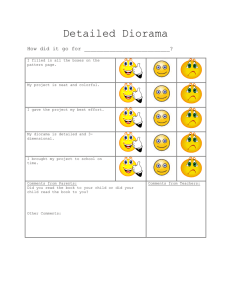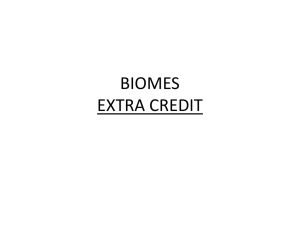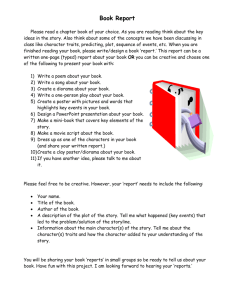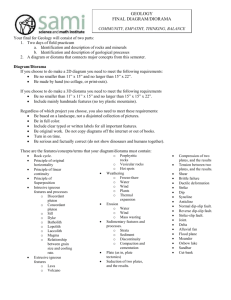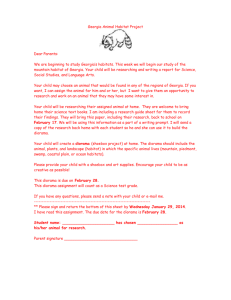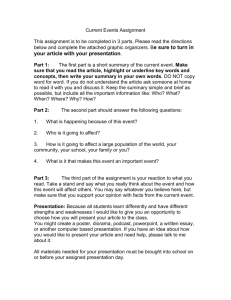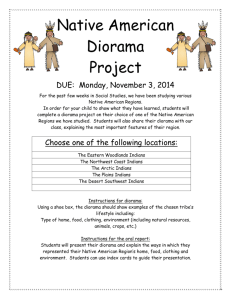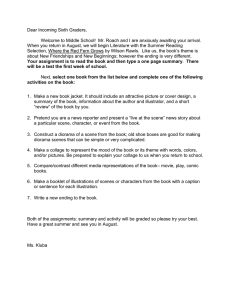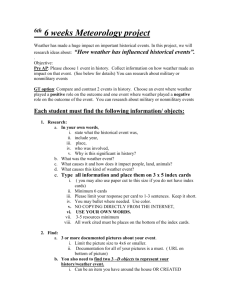Science ... Grade: 3 Using Scientific Knowledge in Life Science
advertisement
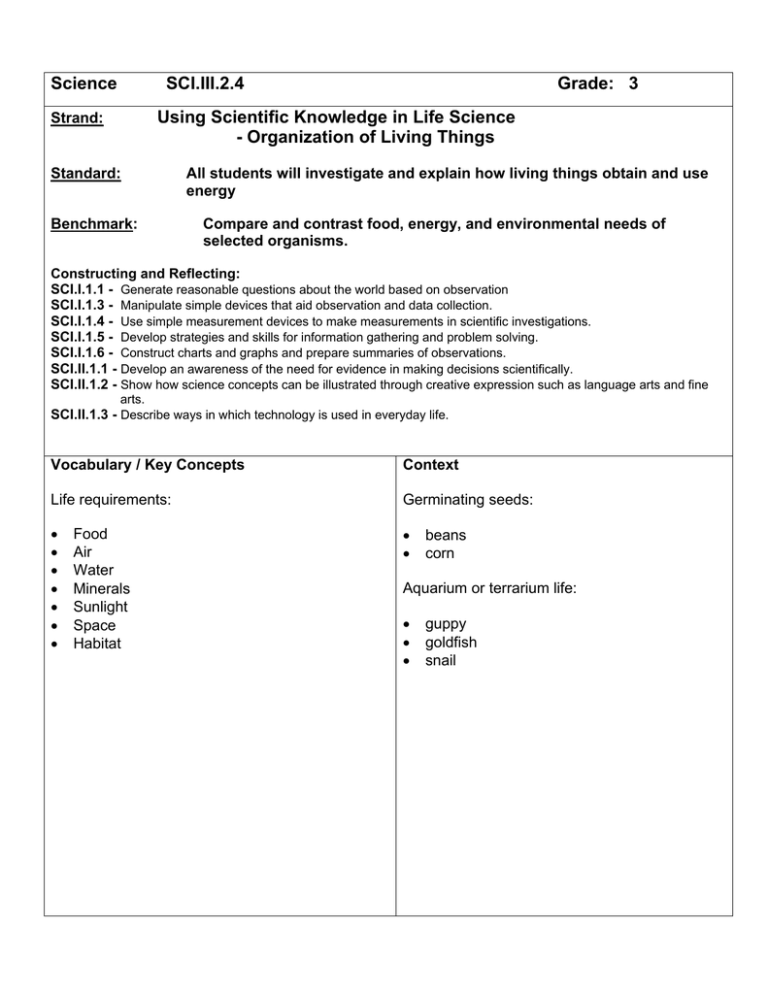
Science SCI.III.2.4 Grade: 3 Using Scientific Knowledge in Life Science - Organization of Living Things Strand: Standard: Benchmark: All students will investigate and explain how living things obtain and use energy Compare and contrast food, energy, and environmental needs of selected organisms. Constructing and Reflecting: SCI.I.1.1 - Generate reasonable questions about the world based on observation SCI.I.1.3 - Manipulate simple devices that aid observation and data collection. SCI.I.1.4 - Use simple measurement devices to make measurements in scientific investigations. SCI.I.1.5 - Develop strategies and skills for information gathering and problem solving. SCI.I.1.6 - Construct charts and graphs and prepare summaries of observations. SCI.II.1.1 - Develop an awareness of the need for evidence in making decisions scientifically. SCI.II.1.2 - Show how science concepts can be illustrated through creative expression such as language arts and fine arts. SCI.II.1.3 - Describe ways in which technology is used in everyday life. Vocabulary / Key Concepts Context Life requirements: Germinating seeds: • • • • • • • • • Food Air Water Minerals Sunlight Space Habitat beans corn Aquarium or terrarium life: • • • guppy goldfish snail Knowledge and Skills All plants and animals have life requirements. Students will compare and contrast (similarities and differences) the ways that various plants and animals obtain and use energy (sunlight and food) from their environment (water, air, minerals, space, and habitat). Resources Coloma Resources: Discover the Wonder – Grade 3 Module B, pages 5-11, pages 23-27. • Plants use energy directly from the sun and convert it to produce their own food (photosynthesis). Animals depend on plants or other animals for their food. Needs” Sing the Science Standards with the Science Explosion Songbook (http://scienceexplosion.indiegroup.com/) Himmelman, John. Dandelion’s Life. Children’s Press, 1999. Maestro, Betsy. Why Do Leaves Change Color? Harper, 1994. 3.2.4 Food Webs from the Bronx Zoo/Wildlife Conservation Society Animal Nutrition from the Indianapolis Zoo Instruction Benchmark Question: How do living things obtain and use energy? Focus Question: How do the life requirements for a plant and animal compare? Students plant a seed (ex. grass, corn, bean). In a journal, students record growth and needs. (link to key concepts III.2.E.4.) Students’ data should contain what the plant needs to survive over a short period of time. The class creates a chart to organize and record data. Chart should include life requirements (link to key concepts III.2.E.4.) and food sources. Students then observe either an animal in the environment, classroom or home and record observations for the same amount of time. Students work in small groups to complete a Venn diagram comparing their plant and animal. Groups report results to class. Class generalizes that animals require food from another source while plants use the sun’s energy to make their own food. Class concludes that while habitats and food sources may differ, the need for air, food, water, minerals, sunlight, and space are similar. VENN DIAGRAM: Assessment Students create a graphic organizer displaying the following information for a selected plant and animal: food, air, water, sunlight, habitat, and food source. Using this information, students divide a box and construct a three dimensional model (diorama) that compares the life requirements of their plant to their animal. (Half of the box for the plant/half of the box for the animal.) (Give students rubric before activity.) Scoring Rubric Apprentice Basic Meets Exceeds Completeness of graphic organizer Criteria Shows two of the life requirements for both plant and animal. Shows three of the life requirements accurately for both plant and animal. Shows four of the life requirements accurately for both plant and animal. Shows food source accurately. Shows all of the life requirements for both plant and animal. Shows food source accurately. Construction of plant life requirements Constructs two of the life requirements in the diorama. Constructs three of the life requirements in the diorama. Constructs four of the life requirements in the diorama. Constructs five or more of the life requirements in the diorama. Construction of animal life requirements Constructs two of the life requirements in the diorama. Constructs three of the life requirements in the diorama. Constructs four of the life requirements in the diorama. Constructs five or more of the life requirements in the diorama. Teacher Notes: Investigate and explain how living things obtain and use energy. The relationship between life and energy is complex. While the generalization that living things need energy to survive is satisfactory at one level of understanding, it fails to convey the crucial role energy plays in all aspects of life, from the molecular to the population level. At the elementary level students can compare and contrast food, energy and environmental needs of selected organisms, such as beans, corn or aquarium life. In the middle and high school, the focus is more specific on the concept that plants make and store food. Scientists speak of the flow of energy through the environment. Almost all life on the earth is sustained by energy from the sun. This energy is transformed and moved from location to location, but doesn't disappear. Plants capture the sun's energy and use it to produce energy rich organic molecules that we call food. The food molecules then serve as energy sources for plants and ultimately animals. In animals, organic food molecules are chemically broken down and carried through the circulatory system to cells, cytoplasm, and eventually to mitochondria. This is, most often the site of final energy release through the process known as cellular respiration. The chemical process of photosynthesis occurs at the cellular level and is capable of converting light energy into molecular energy. Animals are dependent on plants for this first important step in the flow of energy. In plants, light energy is captured by chloroplasts or chlorophyll and is converted to chemical energy through the making of organic food molecules when water and carbon dioxide are chemically combined to make sugar and oxygen. These sugars (organic compounds) formed in photosynthesis are used for the plant's metabolic processes and maybe ultimately be used as food for animals. The chemical process of respiration is also cellular. Cellular respiration releases stored molecular energy so the energy can be used for other life processes. Both plants and animals respire. The acquisition and use of energy by living things is a very abstract idea for students at all levels. Students tend to develop a vague and very broad definition of energy that is inconsistent with the scientific definition. This imprecise definition interferes with the acquisitions of the biological understanding of energy and its importance in a living system.
